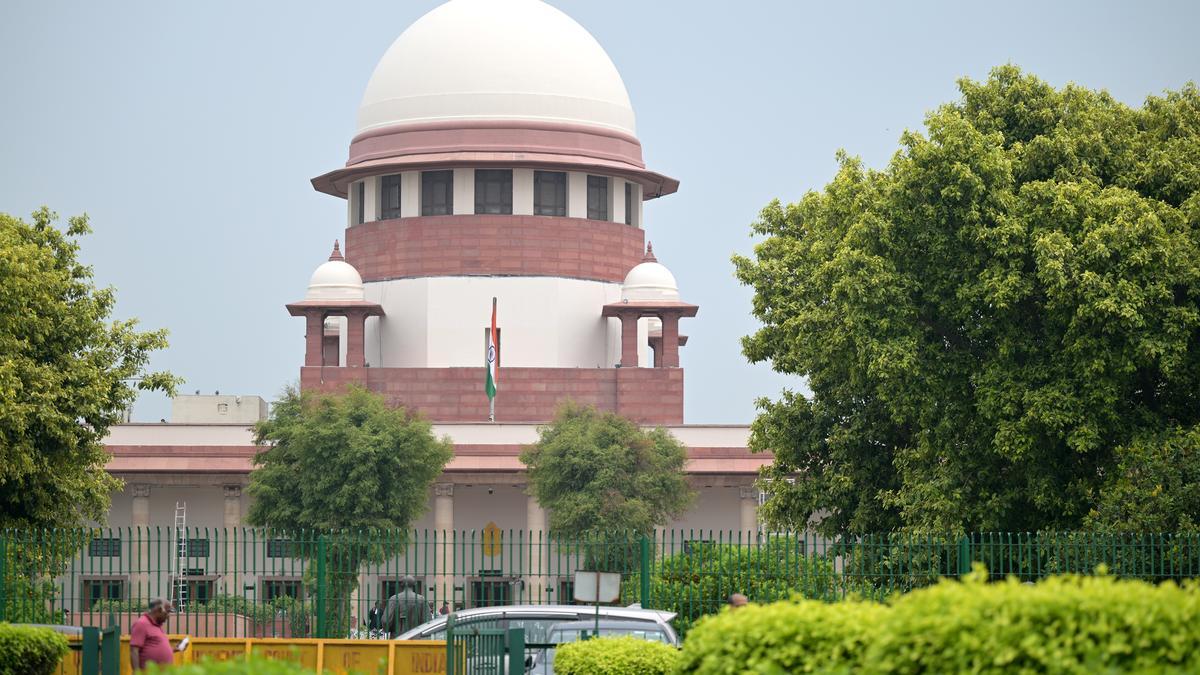(This is the latest edition of the Political Line newsletter curated by Varghese K. George. The Political Line newsletter is India’s political landscape explained every week. You can subscribe here to get the newsletter in your inbox.)
The Scheduled Castes (SCs) are not a monolith; graded inequality exists across different individual jatis within the larger group classified as SCs. They have been treated as one group for the purpose of affirmative action, including quotas in education and jobs. The unequal treatment meted out to SCs by the Indian social system over centuries is being remedied through special interventions. But some SCs are more unequal than others.
In recent decades, States such as Bihar, Karnataka, and Andhra Pradesh/Telangana have attempted sub-categorisation of SCs, but the constitutional validity of such moves has remained ambiguous. The Supreme Court has now ruled that States can create sub-categories among SCs for the purpose of affirmative action. “The principle of sub-classification will be applicable to Scheduled Castes if the social position of the constituents among the castes/groups is not comparable… Sub-categorisation within a class is a constitutional requirement to secure substantive equality,” the apex court said, drawing from an earlier decision that allowed for a ‘more backward’ category among the backward class.
In principle, this sounds a much-needed and reasonable approach — those who deserve more, and immediate public support should have the first claim over such programmes. Relatively advanced castes within the SC spectrum are in a better position to make better use of affirmative action. For instance, Paswans and Chamars have been able to mobilise better and claim available opportunities for SCs in Bihar and Uttar Pradesh. Musahars (literally, rat eaters) constitute 13% of Bihar’s SC population, but after all these years of SC quotas and several schemes, their educational and social status, and living circumstances are unacceptable for a democratic order. The stark difference between Paswans and Musahars in Bihar makes a strong case for treating them separately.
That was attempted, but the experiment collapsed in the face of political pressure. As soon as he came to power in Bihar in 2005, Chief Minister Nitish Kumar formed the category of Mahadalits — 20 out of the 22 Dalit castes were included in it. Paswans and Chamars were excluded. Within a few years, these two communities mobilised sufficient political pressure and got themselves included in the Mahadalit category. So, technically, there are no Dalits in Bihar — all of them are now Mahadalits.
Not surprisingly, it is politics that drives all these. Dominant castes among SCs resist the idea of sub-categorisation. Mr. Kumar’s politics has been termed ‘Mandal 2.0’ by some scholars. He built a new political constituency by splitting both the Other Backward Classes (OBC) and SCs into sub-categories through administrative and representative schemes. Paswans and Chamars were already powerful political entities.
The Congress has supported the formation of sub-categories of SCs in Karnataka and Telangana. Karnataka Chief Minister Siddaramaiah and his Telangana counterpart A. Revanth Reddy have welcomed the Supreme Court decision.
For a detailed background of the sub-categorisation debate, read this:
Union Minister Chirag Paswan has opposed the formation of sub-categories. Those who are opposed to sub-categories argue that the most powerful and advanced among them should be representing any social group. SCs and Scheduled Tribes (STs) are under-represented in Group A services despite the existence of quotas for them. For instance, in Group A Central government jobs, only 13.2% are SCs, and STs account for only 5.5%, though they have 15% and 7.5% reservation, respectively. Among central university teaching staff, SCs constitute 10.9%, while STs make up 4.9%. Sub-categorisation could make this more problematic, perhaps.
With the Supreme Court making it clear that sub-categorisation is a valid and sound instrument for advancement of social justice, numerous demands are bound to arise from communities. For instance, see this analysis on Karnataka:
Will this trigger a race to the bottom? We have a situation of many dominant castes wanting to be included in the OBC list, many OBC groups want to be included in the Extremely Backward Classes (EBC) or Most Backward Classes (MBC) categories, and many in those groups want to be Dalits, and Dalits want to be Mahadalits. The clamour for being included in a particular sub-category could potentially set a new tone in the social justice debate.
Federalism Tract: Notes on Indian Diversity
Partition as a process
Three principal organisations of the Zeliangrong community in ethnic strife-torn Manipur have asked Chief Minister Nongthombam Biren Singh to constitute a District Reorganisation Commission to keep Naga villages out of Churachandpur and Kangpokpi, two districts dominated by the Kuki-Zo people.

